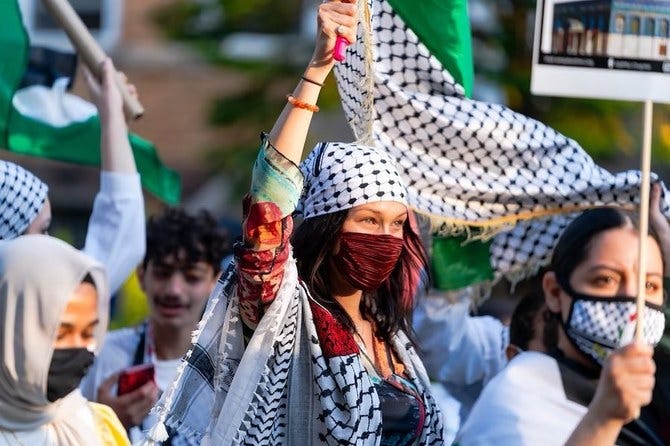In 2007, Urban Outfitters began selling a copy of the Palestinian keffiyeh and labeled it an “anti-war scarf”. Cultural garments like the keffiyeh have long been appropriated by the fashion industry, but many non-Palestinians wear the keffiyeh as a gesture of solidarity. Let’s dive into the history of the keffiyeh as a symbol of resistance and its role in Western fashion.
Watch this article at Hardly Revolutionary on TikTok.
A Brief History of the Keffiyeh
In Palestine today, the keffiyeh is a symbol of Palestinian resistance, liberation, and solidarity. The origins of the keffiyeh are said to date back to the Sumerians in Mesopotamia. The yamegh, or shemagh, was worn by priests as a symbol of high rank. The keffiyeh was also worn as a head cover by farmers as protection from the sun and elements and to wipe off sweat.
During the British Mandate, especially in the 1936-1939 Arab Revolt, Palestinian rebels utilized the keffiyeh as a means to conceal their identities. When British authorities banned its use, all Palestinians began wearing it to make it harder to identify rebels. Traditionally, the keffiyeh features black and white hues, and its designs carry symbolic significance. The predominant feature of the keffiyeh is the fishnet design, reminiscent of a fisherman's net, and the deep connection between Palestinian fishermen and the sea. The fabric's pattern represents historic trade routes linking Palestine to the Middle East, North Africa, and Europe. The olive leaf motif is deeply rooted in Palestinian history and culture, representing resilience, strength, and an enduring connection to the land.


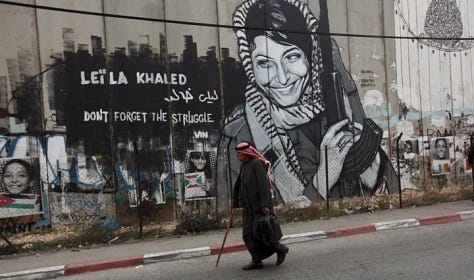
The late Yasser Arafat, former president of Palestine, also had a major influence in solidifying the keffiyeh as an emblem of Palestinian identity. Throughout the first and second intifadas, he wore the keffiyeh as a symbol of Palestinian resistance against occupation, draping it over his shoulder and shaping it into the outline of Palestine. Leila Khaled, a member of the Popular Front for the Liberation of Palestine, gained iconic status in the late 60s and 70s for wearing a keffiyeh. Her choice of the traditionally male-associated scarf was seen as a statement about her role as a woman in the liberation movement.
Keffiyeh in Western Fashion
In the West, the donning of the keffiyeh has taken many forms; from displays of solidarity to the markings of “nothing more than a goddamn trendy ass poser.”
Late 1980’s

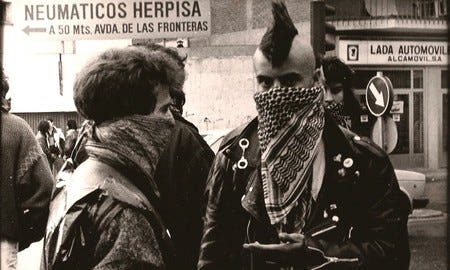
The keffiyeh became a symbol of counterculture fashion in the 80s, gaining popularity among youth during the first intifada. Bohemians and punks wore the scarves around their necks as a gesture of solidarity with the Palestinian cause.
2000s-2010s
In 2000, during and after the second intifada, a new wave of counterculture fashion would gain momentum with the keffiyeh at its center. The Indie Sleaze aesthetic emerged against the backdrop of an economic recession and a rapidly growing anti-war sentiment following the US invasion of Iraq. At the height of this era, you might’ve seen hipsters in Brooklyn wearing the keffiyeh either as an accessory or in solidarity with Palestinian liberation, you could never really tell which unless you asked.


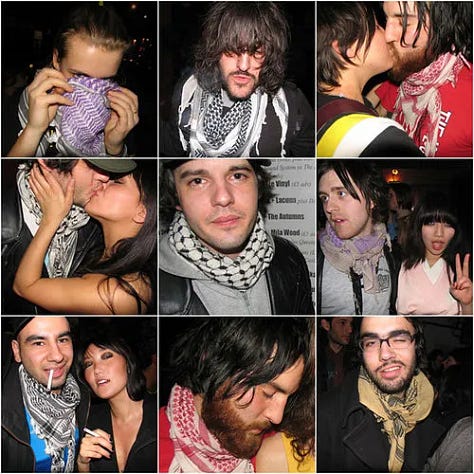
With the rise of fast fashion in the '90s and its boom in the early 2000s, the keffiyeh became a target for commodification in the pursuit of profit and trendiness. In 2001, Raf Simmons appropriated the design for his F/W collection. The design was patched with the image of different musicians including David Bowie, Bauhaus’s Peter Murphy, and The Cure’s Robert Smith. John Galliano did the same for his Mens S/S 2008 collection. In 2017, Topshop faced backlash and withdrew a romper featuring the keffiyeh design. The appropriation extends to numerous brands like Urban Outfitters, Topshop, Cecilie Copenhagen, Boohoo, ASOS, Israeli brand Dodo Bar Or, and countless others.



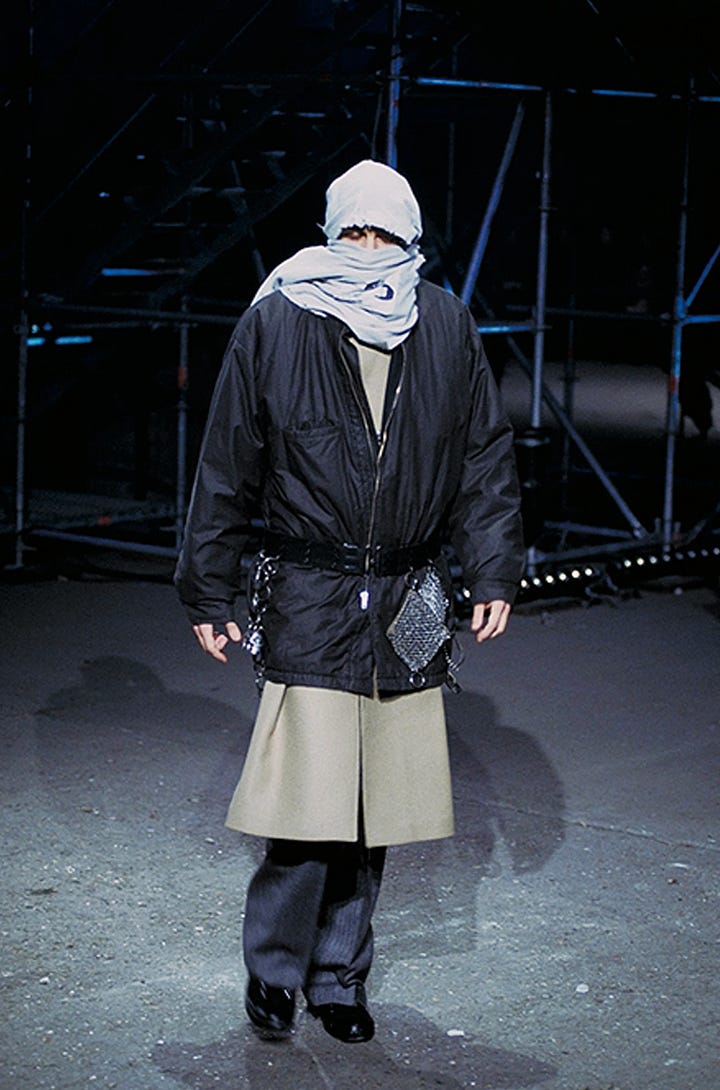
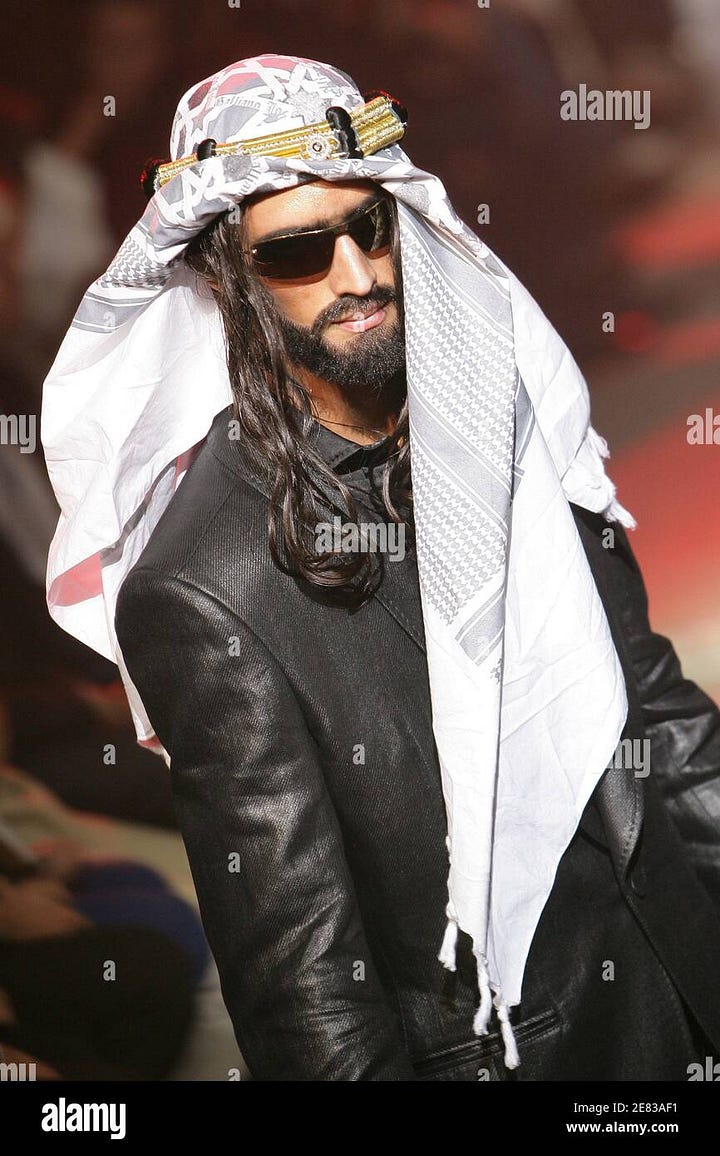
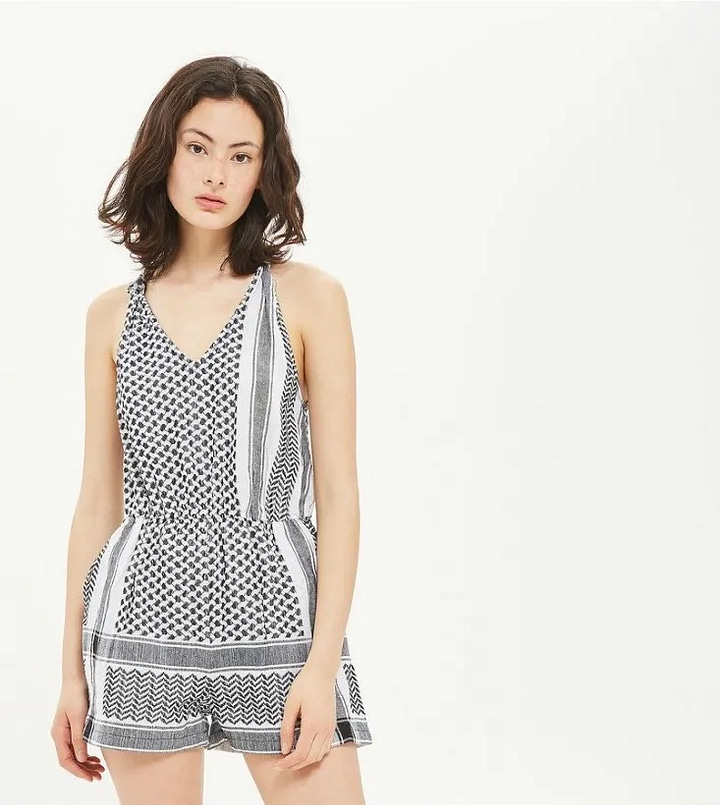

Keffiyeh in Non-U.S Countercultures
The keffiyeh was a popular accessory among counterculture youths in the UK during the 70s and 80s. In the early 2000s, teenagers in Tokyo bought keffiyehs from army surplus stores, often pairing them with camo. In Nordic countries, the keffiyeh also became an icon of youth counterculture and a form of signifying solidarity with Palestinian liberation.

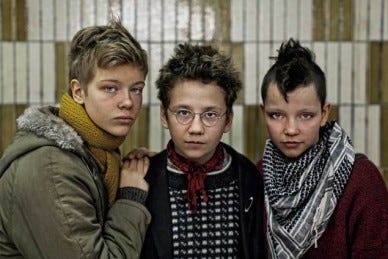
Now
According to trend forecasters like Mandy Lee and fashion news outlets like Vogue, Harper's Bazaar, Nylon, and Vice, indie sleaze is poised to return. Some experts note its return is a natural consequence of the twenty-year trend cycle. However, as the state of the world mirrors the doom of the early 2000s, the resurgence of indie sleaze, and perhaps the popularization of the keffiyeh, could be a response to the dystopian times we’re living in.
It's also crucial to recognize the historical significance of the keffiyeh as a Palestinian and Arab garment. There is privilege in safely wearing it, considering that even in 2023, BIPOC are attacked for wearing it in public.
If indie sleaze and the keffiyeh become symbols of 2020’s fashion, let them be tied to our generation's belief in radical change and our support for ending the occupation in Palestine.
From the river to the sea.
Sources
https://www.nytimes.com/2006/01/19/style/scarf-morphs-into-iconic-accessory.html
https://www.nytimes.com/2007/02/11/fashion/shows/11KAFFIYEH.html
https://www.vice.com/en/article/5dgkpx/is-indie-making-a-comeback
https://www.harpersbazaar.com/culture/features/a38746992/the-return-of-indie-sleaze/
https://www.nylon.com/fashion/indie-sleaze-2000s-fashion-comeback
https://content.time.com/time/subscriber/article/0,33009,967046,00.html
https://swedenburg.blogspot.com/2007/01/kufiyaspotting-12-urban-outfitters.html
https://www.wrmea.org/2010-july/waging-peace-keffiyeh-from-resistance-symbol-to-retail-item.html
https://handmadepalestine.com/blogs/news/history-of-keffiyeh-the-traditional-palestinian-headdress
https://observers.france24.com/en/20160204-israeli-designer-eroticization-palestinian-keffiyeh
https://www.motherjones.com/politics/2009/06/your-intifada-made-china/





